It sounds like a difficult task to determine whether or not a bug is beneficial just on the color of its body, doesn’t it? However, the task at hand becomes much simpler if that color is orange. There are 86 different kinds of bugs that are orange, according to InsectIdentification.org.
In this article, find out what are these orange bugs.
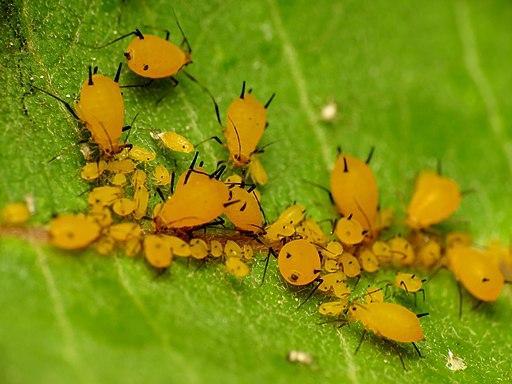
Not all orange bugs on your plants are harmful. Some might even help keep the pests at bay!
The vast majority of these orange beetles are either harmless or beneficial to your plants and should be encouraged. Only a small number of them are harmful and should be avoided.
And the orange bugs you should be most concerned about are the oleander aphids as these nasty pests can rid your plant of all its vigor in just a few days.
There are two basic methods of dealing with harmful orange bugs (oleander aphids). That is natural and biological method. Usually, using natural methods like homemade sprays, neem oil sprays, and splashing the bugs off with water pressure, should get the job done.
And, to top it off, with biological control, you can attract or buy predator bugs.
They will be the guardians of your garden. However, in some cases, chemical control might become necessary. This usually happens when an orange bug infestation has gone out of control.
Continue reading if you want to learn more about orange bugs and how to get rid of them from your potted and outdoor plants.
Oleander Aphids
The oleander aphid is also commonly referred to as the swan plant aphid or the milkweed aphid. They are a prevalent problem for many ornamental plants that are of high value. These harmful orange beetles are typically found worldwide in tropical and warm climates.
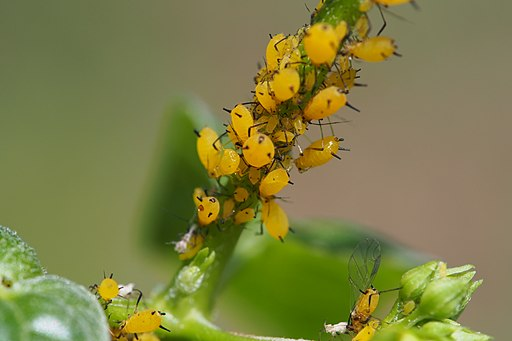
Aphis nerii, often known as the oleander aphid, is a brilliant orange aphid with black legs and antennae.
In the United States, they are found most commonly in the states of California, Arizona, and Florida. In particular, the state of Florida is the habitat of this vivid yellow aphid.
These aphids are known to feed on oleander, also known as Nerium oleander, wax plants, and various types of milkweed, including butterfly milkweed and scarlet milkweed.
Related: Aphids on Indoor Houseplants: 10+ Smart Ways to Get Rid of Them!
Damage Caused By Oleander Aphids
Aphids generally have piercing mouthparts that allow them to feed on the sap of their hosts, and oleander aphids are no exception. In addition to this, they secrete honeydew, a sweet and sticky excrement that is appealing to ants.
Bear in mind that the presence of ants is an early warning indication that your plant has Oleander Aphids infesting it.
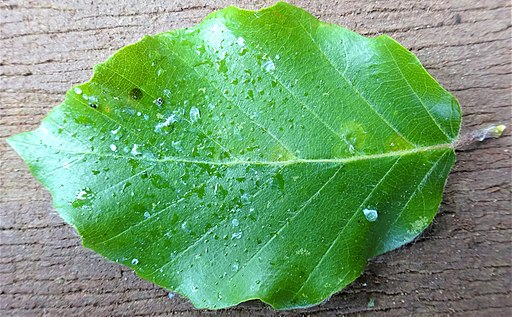
Damage caused by oleander aphids is primarily aesthetic and does not kill the plants.
Honeydew left behind by aphids is just as damaging to your plants as the damage caused by the aphids themselves. In the event that it accumulates, it will produce the perfect environment for the growth of sooty mold.
And even a light coating of mold on the leaves of your plants can prevent photosynthesis from occurring normally.
Although this aphid is capable of spreading viruses like sugarcane mosaic potyvirus and papaya ringspot potyvirus, home gardeners are more concerned about the possibility of stunted plant growth brought on by recurrent severe infestations throughout the year.
How To Get Rid Of Oleander Aphids?
Eliminating oleander aphids, like any other type of aphid, is a relatively straightforward process. Just bear in mind that poisoning these pests is the last thing you want to do.
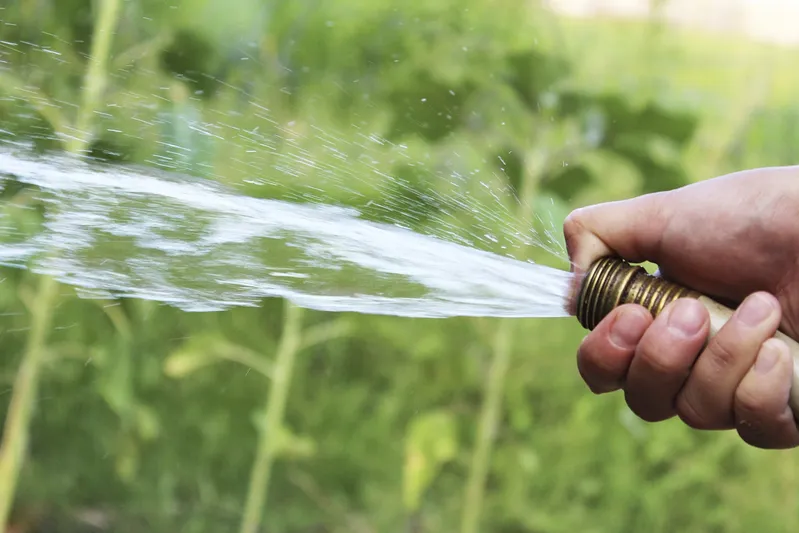
You can use water to wash the bugs off if you want to be extra cautious or don’t want to approach them.
It is because milkweed is the focal point of these nasty bugs, butterfly gardens, and many other ornamental settings. And, you do not want to kill the butterflies, do you?
Therefore, to get rid of oleander aphids, we recommend using the three approaches listed below and resorting to chemical control methods only as a last option.
Related: How To Identify, Control, And Prevent Brown Soft Scale Bugs On Plants?
Controlling Orange Bugs Physically!
Always consider natural methods as your first line of defense. You can use natural methods to get rid of harmful orange bugs, also known as oleander aphids if they have already contaminated your garden plants.
Removing Oleander Aphids By Hand
To begin, you should make an effort to remove them by merely rubbing the plant’s leaves and branches. When you are doing this, don’t forget to wear gloves. It is essential to keep your hands covered at all times when handling certain plants since they may have sharp thorns.
Wash Oleander Aphids Off Using Water Pressure
You can get rid of the bugs by washing them off with water if you want to be extra cautious or don’t want to get too close to them. You can create pressure by using a hose, but you should be careful not to apply too much pressure because it could cause harm to the leaves or branches.
Get Rid Of Oleander Aphids Using Rubbing Alcohol
Eliminating oleander aphids with rubbing alcohol, which can be found in most households, is another option. However, this technique has the drawback of removing butterflies and other beneficial insects along with the harmful orange bugs.
As a result, you should only employ this method if the infestation is severe. Additionally, following the application of rubbing alcohol to oleander aphids, you need to wash the plant thoroughly with water to remove any excess alcohol.
Organic Control Methods For Oleander Aphids
Controlling an oleander aphid infestation using organic approaches is an additional method that is risk-free and simple to implement. When treating infested plants using organic ways, we either make use of predator bugs, organic soil, or some form of organic chemical to do the job.
When you want the best possible result, you should always employ physical control methods in conjunction with organic approaches. Here are a few organic options to consider
Predatory Bugs To Get Rid Of Oleander Aphids
It has been observed that many kinds of ladybugs consume oleander aphids as food. But in particular, you should look into purchasing these two different kinds of ladybugs for your yard.
The first type is the yellow-shouldered ladybug, which is scientifically known as Apolinus lividigaster. The second type is the variable ladybug (Coelophora inaequalis).
They devour oleander aphids with a ravenous appetite. And, they won’t waste any time in ridding your plants of those oleander pests.
Neem Oil Pesticides For Oleander Aphids
Neem oil pesticides are environmentally friendly and work very well to get rid of orange bugs as well as many other plant pests. Neem oil can be applied to your plants through a simple spraying process. It will not only eliminate oleander aphids but also prevent new ones from appearing for a limited period.
However, because neem oil deteriorates rapidly when in sunlight, you will need to use it consistently for a few days to see positive benefits.
Homemade Spray To Get Rid Of Oleander Aphids
Eliminating oleander aphids is as easy as making a DIY spray with little soap and water. Put a tablespoon of dishwashing liquid into a spray bottle, then fill the rest of the bottle with water from the sink. After giving the spray bottle a quick shake to combine the ingredients, your DIY spray is now ready for use. Spraying it on the oleander’s leaves and branches and directly on the aphids can kill their eggs and remove them from the plant.
Related: Tiny White Bugs on Plant & How to Identify and Get Rid of Them?
How To Prevent Oleander Aphids From Coming Back?
As they say, care is always better than a cure. Therefore, we suggest a few good habits you should develop as a gardener to keep the pests at bay.
Do Not Over Water Your Plants!
When watering your plants, you should exercise caution so that you do not overwater them. It will create a damp environment, which will attract aphids and other insects that can be hazardous to plants, animals, and humans. Furthermore, it is best to water your plants first thing in the morning so the soil can dry out before night.
Make Sure There Is Enough Space Between Plants
When you are planting, you should strive to keep a decent gap between your plants so that air may flow between them. Aphids, which can cause significant damage to plants, won’t bother with areas that are dry and exposed to the atmosphere.
Create A Healthy And Pest-Immune Ecosystem
You may promote and attract beneficial insects to your garden by ensuring that the environment is kept in healthy condition. Some insects hunt down and consume hazardous pests, thereby protecting your garden from those pests. You should cultivate plants like lace flowers, tickseed, and cosmos in order to entice beneficial insects to your garden.
Beneficial Orange Bugs
As was just discussed, most orange bugs are either completely harmless or valuable to your plants. They protect your plants by eating pests that could be detrimental to them. The Lady Bug and the Milkweed Assassin Bug are excellent examples of this.
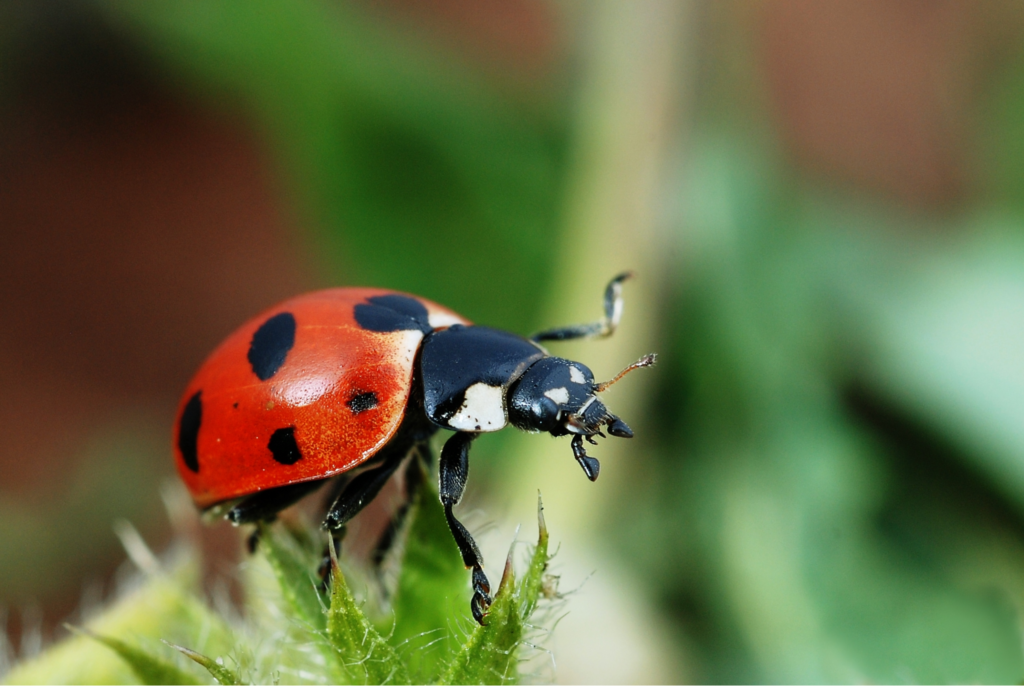
Ladybug adults and larvae eat aphids, spider mites, and mealy bugs, which is great for gardeners.
Both are voracious eaters of potentially dangerous insects, such as Colorado potato beetles, spider mites, asparagus beetles, aphids, grape rootworms, chinch bugs, whiteflies, etc.
You should always try to encourage the presence of these orange bugs that are useful to your garden by ensuring that the environment is kept in good condition and growing flowers that attract them.
In addition to assisting in pollination, they will protect your plants from pests that are damaging to them, allowing your garden to thrive.
Conclusion
Numerous orange bugs have stripes and polka dots, which stand out sharply against the green of your plants. Some are dangerous, while others might assist you in containing the pesky bugs. The aphid is one of the harmful orange bugs you could encounter in your garden.
Although several aphid species can be orange, the oleander aphid (Aphis nerii), which has one of the broadest diets of all aphids, is probably the one you’re dealing with. However, there is no need to worry, and you can control them easily by following the guidelines above.
Frequently Asked Questions
What are these little orange bugs?
Does it seem like the orange bugs are infesting all of your plants? If so, they are probably aphids, which are tiny sucking insects with delicate bodies. They come in numerous colors, including orange. They could, however, be chiggers, which are small orange, yellow, or red parasitic larvae of certain mites.
What is an orange stink bug?
Bronze Orange Bugs are the stinky, unsightly bugs that crawl all over your oranges. The Bronze Orange Bug is notorious for releasing a toxin that humans find extremely offensive when disturbed. They are more commonly known as stink bugs, and because they feed by sucking the juices out of stems, they can cause significant harm to citrus plants.
How do you get rid of orange bugs?
To get rid of orange bugs in potted indoor or outdoor plants, use a naturally based insecticide containing natural components such as Pyrethrum. Furthermore, you can remove large nymphs and adult bugs as soon as you spot them. Finally, you can drop any bugs you come across into a bucket of soapy water to drown them.
Are assassin bugs orange?
Milkweed assassin bugs are one-inch long, bright orange and black, slender-bodied insects with long legs and antennae. It measures about half an inch in length and is one of the most beautiful insects that is not a butterfly. When picked up and handled carelessly, some assassin bugs, most famously the wheel bug, can bite.
What are the tiny orange bugs that bite outside?
Chiggers are the larvae of certain species of mites and can range in color from orange to yellow to red. They can bite and inflict acute itching and red welts. Chiggers are drawn to places of the body where clothing is either pressed closely against the skin or where the skin is fragile.
Are Oleander aphids harmful?
While large populations of Oleander aphids can seriously destroy the host plant, the damage is typically aesthetic. However, there is another reason why you should be worried about them. They concentrate milkweed toxins in their tissue more than native milkweed aphids, making them poisonous to beneficial insects. This could put the ecosystem of your lawn in danger.
Are oleander aphids native?
Oleander aphids are not native to the United States; instead, they were brought here on oleander when the plant was introduced. They can cause the flowers and pods on the plant to not develop properly or possibly die, in addition to sucking the sap out of the stems & leaves.
Sources For Further Reading
Orange Aphids on Milkweed | University of Maryland Extension. (2022). Retrieved 11 September 2022, from https://extension.umd.edu/resource/orange-aphids-milkweed
Aphid, O. (2022). Oleander Aphid | NC State Extension Publications. Retrieved 11 September 2022, from https://content.ces.ncsu.edu/oleander-aphid
Pollinator Conservation Biocontrol: Beneficial Insects | IPM and Pollinator Conservation. (2022). Retrieved 11 September 2022, from https://ncipmhort.cfans.umn.edu/beneficial-insects
Assassin Bugs and Ambush Bugs (Reduviidae). (2022). Retrieved 11 September 2022, from https://hort.extension.wisc.edu/articles/assassin-bugs-and-ambush-bugs-reduviidae/
Editor’s Recommendations
How To Get Rid Of Spider Eggs From Plant Soil For Good? The Ultimate Guide
How To Get Rid Of Fungus Gnats For Good | The Ultimate Guide
How To Get Rid Of Millipedes In Home And House Plants For Good!







